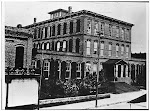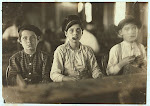Book Review/History: The Columbia Restaurant Spanish Cookbook, by Adela Hernandez Gonzmart and Ferdie Pacheco.
The authors of this interesting book, not only worked at and have strong ties to the celebrated Columbia Restaurant, but are renowned and colorful Ybor City natives. Adela Hernandez Gonzmart graduated from the Juilliard School of Music. She was a concert pianist and toured the United States and Cuba. She was instrumental in forming the Tampa Symphony Orchestra, and has received numerous awards for her contribution in the community. Ferdie Pacheco is an author, and painter. His paintings have been on display in London, Paris, New York, and Miami. He was Muhammad Ali’s personal physician from 1963 to 1977, and wrote about his experiences in Muhammad Ali: A View from the Corner, and Blood in My Coffee: The Life of the Fight Doctor.
The Columbia Restaurant is acclaimed as “the nation’s largest Spanish restaurant and Florida’s oldest.” It was started by Coasimiro Hernandez, Adela’s grandfather, who purchased a bar in 1905 and started the Columbia Café, where he sold coffee, soup, and sandwiches. The name Columbia comes from a popular song, “Columbia, Gem of the Ocean,” which represented his love of America. His vision for the café must have prompted him to add to the Columbia sign, “The Gem of All Spanish Restaurants.”
This cookbook, containing some of the Columbia Restaurant’s recipes, is also a history of the restaurant. Though I had eaten at the Columbia Restaurant, I knew little about the history until reading this book. I found it interesting, including the four pages Pacheco writes about the history and making of Cuban bread.* Although it is called Cuban bread, Gonzmart points out that it not like the bread she had in Cuba, which is lighter, and therefore should be called Ybor City bread or Tampa bread. One interesting fact Pacheco relates is that “In the old days we would deliver the morning bread to each house by sticking it on a big nail on the front door frame. You could look down the street and know we had been there.”
The Columbia Restaurant customers included local political leaders, professionals, and mobsters “Santo Trafficante, father and son, kingpins of the world of bolita (the numbers games), and what Pacheo calls “zanies”: "Pan con Chinches, the resident charity case; Pepe Lu Babo, the babbling newsboy; and Crazy Benny, who carried a rubber briefcase.” Among the celebrities who ate at the Columbia were: Babe Ruth, Lou Gehrig, Jack Dempsey, Rocky Marciano, Esther Williams, Cesar Romero, Carol Burnett, and President John F. Kennedy. President Kennedy visited in November 1963, only days before his assassination. Gonzmart tells about her and her husband’s visit with Generalissimo Francisco Franco in 1965 because of a report by his minister of tourism about the Columbia Restaurant.
Of course, the real treasures of the book are the recipes from this famous restaurant, so you can sample some of these gems of Ybor City cruise from your own kitchen. Make sure you try the Chicken and Yellow Rice, Arroz con Pollo, a classic dish.
I was researching online for Arroz con Pollo recipes and learned that there are endless variations, but none like the Ybor City versions I remember. Fortunately, the website for The Columbia does have some recipes, including the recipe for Arroz con Pollo. Try it out. Most people, Cuban or not like this dish. You can leave out the wine, and use the prepackaged yellow rice (saffron is expensive) and it will still be delicious. http://www.columbiarestaurant.com/recipe.asp?FeaturedItemID=51 The website also has the recipes for three other classics: Black Bean Soup, Spanish Bean Soup, and the Cuban Sandwich. If you decide to make the Spanish Bean Soup, and don’t care for the favor of chorizo (Spanish sausage), you can substitute a smoked sausage of your choice and get a flavorful hearty bean soup, though I guess we will have to call it American Spanish bean soup.
*I promise I won’t write about Cuban bread again, unless it comes up in Ybor City’s history being used to smuggle weapons to Cuba or something. But just in case you are interested in more history about Cuban Bread and the Cuban Sandwich, visit this site which has pictures, and a short informative article, History of Cuban Sandwich, Cubano Sandwich: http://whatscookingamerica.net/History/Sandwiches/CubanSandwich.htm.
Genealogical Source: Tampa City Cemeteries
The City of Tampa, Park Services maintains several cemeteries: Jackson Heights, Marti/Colon, Oaklawn, Woodlawn, and Pyramid Crypts. You can search their database online. Click on this link http://www.tampagov.net/dept_parks_and_recreation/information_resources/cemeteries/, or in the future go to the side bar of my blog: Genealogy Research Links, Tampa City cemeteries. There will be a link “Search the cemetery records database,” as well as individual links to the cemeteries. The cemetery links will have pictures and some historical information about each cemetery.
Oaklawn Cemetery was the first public cemetery, established in the mid-1800s. It was for “white and slave, rich and poor.” Tampa’s first mayor, Judge Joseph B. Lancaster was buried there.[1] This is where the pioneers of Tampa are buried. The next generation is buried in Woodlawn.
Woodlawn Cemetery was opened in 1888, when Oaklawn was full. Until 1917, it was one of the most popular burial places, and many prominent citizens are buried there. A fire in 1986 burned records of the grave sites.[2] In the center of the cemetery is a block of Confederate and Union soldiers side by side.
In 1942 Tampa City was given Jackson Heights. Originally it was called Oakland and “Woodman of the World monuments are very prominent.”
Marti/Colon is actually two cemeteries. Marti is owned by Tampa City and the other only maintained by them.
Pyramid Crypts records are part of their database search page, although they are not listed on the main page, and no history is given.[3]
[1] City of Tampa, City Cemeteries, (http://www.tampagov.net/dept_parks_and_recreation/information_resources/cemeteries/: accessed 7 February 2010).
[2] Janet Zink, “Cemetery Roomier Than First Thought,” St. Petersburg Times, 16 June 2005, online archives (http://www.sptimes.com/2005/06/16/Hillsborough/Cemetery_roomier_than.shtml: accessed 7 February 2010).
[3] City of Tampa, City Cemeteries.







1 comment:
Hi Patricia, it's Travis Olsen. First off, I wanted to say your blog looks very professional.
Next, to answer your questions, I became interested in Maya Guatemala when I talked to people who knew about the dire health situation there. I resolved to make a difference.
Also, yes, there are many Mayans who still weave fabric which they sell at the market. Each village has a different style and design of clothing. I think it's really neat.
Post a Comment